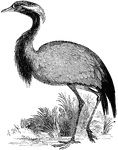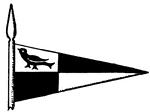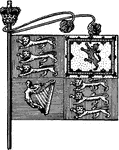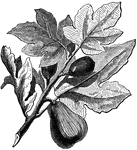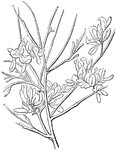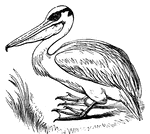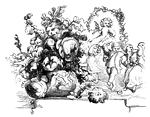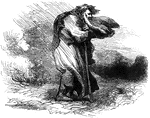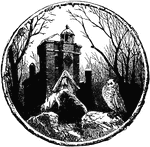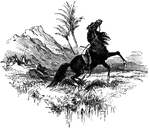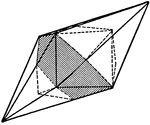
Green Fluorspar from Saxony
Certain crystals of green fluorspar from Saxony, showing the form ∞ 03, {310}, have one half of their…

Gonfanon
The gonfalon, gonfalone (from the early Italian confalone) is a type of heraldic flag or banner, often…
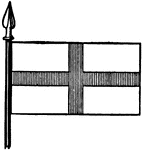
Flag of St. George
The Flag of St. George is a flag of Great Britain. It shows the red cross of St. George on a white field,…

White Ensign
The White Ensign is a flag of Great Britain. It is the peculiar flag of the royal navy.
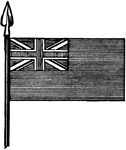
Blue Ensign
The Blue Ensign is a flag of Great Britain. It is the distinctive ensign of the royal naval reserve.
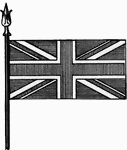
Union (National) Flag of Great Britain
The Union Flag is the national flag of Great Britain. It is more properly called the 'Great Union',…

Union Flag: Crosses of St. George, St. Andrew, and St Patrick
The Union Flag after the Union of Ireland and Great Britain, and the addition of the cross of St. Patrick.

Frankincense
Frankincense (Olibanum) is a gum resin obtained from Boswellia Carterii, of the order Burseraceae, and…

Gadwall Duck
The Gadwall (Chaulelasmus streperus) is a widely distributed duck, appearing throughout Europe and N.…
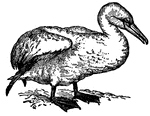
Gannet
Also known as a Solan Goose (Sula bassana), the Gannet is a large marine bird which nests in scattered…

Geum Urbanum
Geum urbanum is a member of the genus Geum, a genus of hardy plants (Rosaceae). Not usually used decoratively,…

Golden-Crested Wren
Also known as the Kinglet, the Golden-Crested Wren (Regulus cristatus) is the smallest of European birds.…

British Golden-rod
British Golden-rod is a member of the large composite genus Solidago, which is chiefly North American.…

Gooseberry Caterpillar (Nematus ribesii) and Sawfly
Gooseberry Caterpillar is the name applied to the larvæ of two different insects, both injurious to…
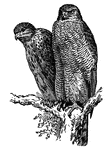
Goshawk
The Goshawk (Astur palumbarius) is a hawk abundant in the forest regions of northern Europe and Canada,…

Grass of Parnassus
A grass of Parnassus is any member of the genus Parnassia, of the Saxifrage family, growing in damp…

Grass Snake
Its color is olive-gray or brown above, with black bands and spots, and checkered black and white beneath.…
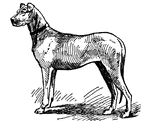
Great Dane
The Great Dane is a dog which has at different times been called the 'boar-hound', the 'German Mastiff',…
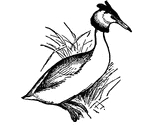
Great Crested Grebe
The Great Crested Grebe (Lophæthyia cristata) is a fresh-water, migratory, diving bird of the family…
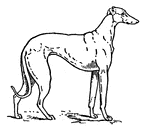
Greyhound
The Greyhound as a show dog is judged as follows: height and weight, ranging from 23 to 27 in. and from…
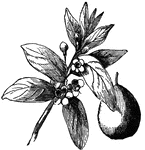
Guava
Guava (Psidium guayava) is a low-growing West Indian tree belonging to the family Myrtaceæ. It bears…

Guelder Rose
Also known as the Snowball Tree, the Guelder Rose is a cultivated form of the genus Viburnum, especially…

Common Guillemot
The Common Guillemot (Uria troile) is a member of the auk family. It breeds on all rocky coasts of the…
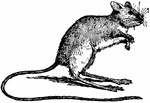
Jumping Mouse
The Jumping Mouse (Zapus hudsonius) is a N. American, jerboa-like mouse, with long hind legs, a very…

Kittiwake Gull
The Kittiwake gull (Rissa tridactyla) is a sea-gull characterized by the absence of the hind toe. It…

Head of Kudu
This illustration shows the head of a kudu. A kudu is a large African antelope related to the eland,…
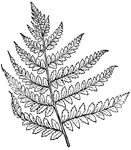
Lady Fern
The lady fern in the popular name of the fern 'Asplenium filix-foemina'. It is variable in size and…

Lamium Album
Lamium album (also known as the white dead-nettle, or archangel) is a member of the Lamium, a genus…

Lapwing (or Peewit)
A handsome plover-like bird of Northern Europe and Asia (Vanellus cristatus), also known in Great Britain…
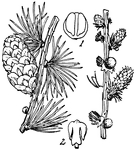
Larch, Cone and Flowers (male and female)
Larch, or Larix, is a genus of hardy, deciduous, coniferous trees of very graceful habit. They bear…

Kingfisher, Dacelo gigas
The Settler's Clock ('Dacelo gigs'), is a very large kingfisher found in Australia, where it receives…

Lemming
A lemming is a small, yellowish-brown rodent, closely related to the vole, and belonging to the genus…

Ring-tailed Lemur
A familiar example of the true lemur, the Ring-Tailed Lemur (Lemur catta) , or 'Madagascar cat', is…

The Lentil Plant
This illustration shows a lentil plant. Lentils are the round, flat seeds of a small leguminous plant…
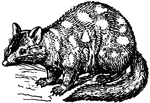
Dasyurus viverrinus
Dasyurus viverrinus, a small class of marsupial with a gray or brown coat spotted with white.
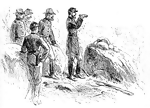
Little Round Top
A war council at the top of Little Round Top in Gettysburg, Pennsylvania. It was the site where the…
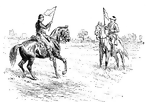
Flag of Truce
Civil War soldiers waving the flag of truce, signaling a halt in fighting for both sides.
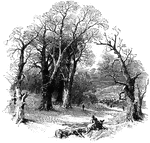
Trees in the Winter
Bare trees during either the winter or fall. They are in an open valley where people are standing.

Newport Tower
The Newport Tower (also known as: Round Tower, Touro Tower, Newport Stone Tower and Old Stone Mill)…
